- |<
- <
- 1
- >
- >|
-
Keisuke Sumide, Yoshikazu Matsuoka, Yoshiaki Sonoda2019Volume 70 Pages 1-8
Published: 2019
Released on J-STAGE: December 28, 2019
JOURNAL FREE ACCESSHuman hematopoietic stem cells (HSCs), which form the basis of human hematopoietic cell transplantation therapies, have long been empirically believed to exist only in the CD34-positive (CD34+) fraction in the all human HSC sources. We have challenged this long-standing dogma and succeeded to identify CD34-negative (CD34−) severe combined immunodeficiency (SCID)-repopulating cells (SRC) as primitive HSC in human CB. However, because of quite low incidence of the SRC in human CB-derived CD34− cell fractions, it was difficult to characterize the human CD34− SRC (HSC) and to accurately compare between the characteristics of the CD34− HSC and that of CD34+ HSC. Through the series of our studies, we finally achieved to develop the ultra-high-resolution purification methods for prospectively isolation of the human CD34− HSCs from human CB, as well as CD34+ HSCs, using two positive markers, CD133 and GPI-80, as well as CD34+ HSCs. Using this method, we succeeded to detect long-term human hematopoietic cell repopulation in the recipient mice translated with single-human CD34− SRC (HSC). As evidenced by the single-cell-initiated serial transplantation analyses, human CD34− HSC possess self-renewing capability to expand HSC pool. And this method enables detailed comparison between human CD34+ and CD34− HSC. We demonstrated that the purified human CD34− HSC show a potent megakaryocyte/erythrocyte (MegE) differentiation potentials in vivo and in vitro. According to the results of single-cell-initiated colony forming cell assay, human CD34− HSC dominantly differentiated into MegE lineage in semi-solid culture. But CD34− HSC also showed multi-Lineage hematopoietic cell repopulation in the recipient mice. Thus, in human CB, MegE progenitors may be generated directly from the CD34− HSC via a bypass route. On the other side of analyses, the human CD34− HSC could generate both CD34+ and CD34− SRC (HSC) but CD34+ HSC could not generate CD34− SRC (HSC). These facts strongly suggested that CD34− HSC resides at the apex of human HSC hierarchy. Based on these data, we propose a novel human HSC hierarchy model and a revised road map for the commitment of human CD34− HSC in CB.
View full abstractDownload PDF (1472K) -
[in Japanese], [in Japanese], [in Japanese], [in Japanese], [in Japane ...2019Volume 70 Pages 9-12
Published: 2019
Released on J-STAGE: December 28, 2019
JOURNAL FREE ACCESSDownload PDF (763K) -
Aya Murakami, Masataka Nakamura, Satoshi Kaneko, Wen-Lang Lin, Dennis ...2019Volume 70 Pages 13-17
Published: 2019
Released on J-STAGE: December 28, 2019
JOURNAL FREE ACCESSThe human epidermal growth factor receptor family consists of four members that belong to the ErbB proteins (ErbB1-4). Neuregulin-1 (NRG1)/ErbB signaling regulates brain development, synaptic plasticity and neuronal survival. Abnormalities in this signaling have been implicated in the etiology or development of neurodegenerative diseases such as Alzheimer’s disease, Parkinson’s disease, and amyotrophic lateral sclerosis. So, we aimed to investigate whether the expression of NRG1 or ErbB proteins are altered in progressive supranuclear palsy (PSP). Whereas C-terminal ErbB4 immunoreactivity was partially but distinctly present in the cytoplasm and/or in the nucleus of neurons in control patients, it was rarely observed in the neuronal nuclei in PSP patients. In contrast, neurofibrillary tangles, coiled bodies, and threads were robustly immunoreactive for C-terminal ErbB4 in PSP. Our present results suggest that disturbed NRG1/ErbB4 signaling could be an important event in the pathogenesis of PSP.
View full abstractDownload PDF (19585K) -
2019Volume 70 Pages 19-20
Published: 2019
Released on J-STAGE: December 28, 2019
JOURNAL FREE ACCESSDownload PDF (596K) -
2019Volume 70 Pages 21-61
Published: 2019
Released on J-STAGE: December 28, 2019
JOURNAL FREE ACCESSDownload PDF (1292K) -
2019Volume 70 Pages 62-226
Published: 2019
Released on J-STAGE: December 28, 2019
JOURNAL FREE ACCESSDownload PDF (2177K) -
2019Volume 70 Pages 227-257
Published: 2019
Released on J-STAGE: December 28, 2019
JOURNAL FREE ACCESSDownload PDF (1082K)
- |<
- <
- 1
- >
- >|